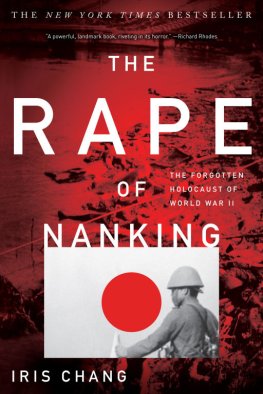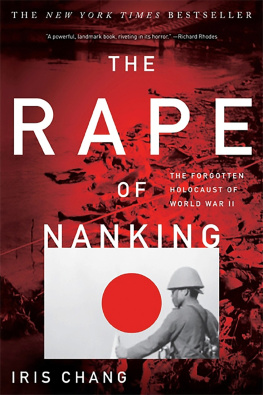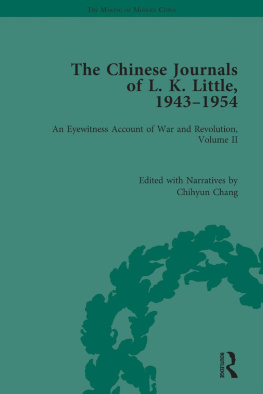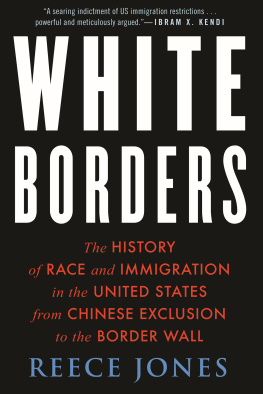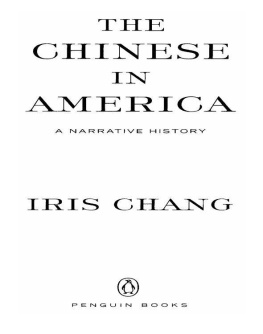Table of Contents
Praise for Iris Chang and The Chinese in America
Comprehensive, beautifully written, filled with deft and passionate analysis the definitive book on Chinese American history for a new generation. Iris Chang places todays Chinese Americans brilliantly into 150 years of U.S. history.
David Henry Hwang, Obie and Tony award-winning playwright of M. Butterfly and Flower Drum Song
A major drama ... Changs book is crammed with telling stories not only from the mining camps and Chinatowns of America but from Chinese villages and cities. Chang has found a great subject, and her stories are well worth reading.
The Washington Post Book World
Valuable for the mirror it holds up to the United States ... Changs timely book deserves to be read in homes and schools because it documents well the struggles of one ethnic group to win its rightful place alongside others.
St. Louis Post-Dispatch
Tells the story thoroughly and with confidence... vital to our history. To understand who we are in the early twenty-first century one must know who we were and how we got here. Iris Changs book tells one important part of the American story comprehensively.
Los Angeles Times
As a chronicle of the timeless battle for civil liberties, the book is high, panoramic drama.
The Oregonian (Portland)
Informative, thought-provoking and entertaining.
Asian Week
May be the definitive history of the Chinese experience in this country.
The Atlanta Journal-Constitution
Both a sweeping view and personal stories of what it means to be Chinese in the United States ... [told] in clear, rich prose.
San Jose Mercury News
[An] engrossing account of Chinese-American struggles and triumphs.... Chang, perhaps the best young historian working today, combines exhaustive research with sheer writing ability to fashion a unique history that has the potential to reach a wide audience.
Ft. Worth Star-Telegram
If you are hungry for the history of the American experience, The Chinese in America is a must-read. We are fortunate to have the incomparable Iris Chang tell this important and timely story.
James Bradley, author of Flags of Our Fathers
A remarkable narrative... an epic that flows effortlessly and sweeps the reader along for an informative, fascinating and emotional ride.... This book is not just for Chinese Americans but also for all newly arrived immigrants and conscientious citizens that care to appreciate the deficiencies of the American democracy.
George Koo, Pacific News Service
ABOUT THE AUTHOR
Iris Chang graduated with a degree in journalism from the University of Illinois at Urbana-Champaign and worked briefly as a reporter in Chicago before winning a graduate fellowship to the writing seminars program at The Johns Hopkins University. Her first book, Thread of the Silkworm, told the story of Tsien Hsue-shen, father of the Peoples Republic of Chinas missile program. Her second, the international bestseller The Rape of Nanking, examined one of the most tragic episodes in World War II. Her third and last book was The Chinese in America, an epic history spanning 150 years. As one of Americas leading young historians, Iris Chang received numerous honors, including the John T. and Catherine D. MacArthur Foundations Program on Peace and International Cooperation Award, the Woman of the Year Award from the Organization of Chinese Americans, and honorary doctorates from the College of Wooster in Ohio and California State University at Hayward. Her work appeared in many publications such as Newsweek, The New York Times, and the Los Angeles Times, she was featured on numerous television and radio programs, and she lectured widely. She died in November 2004.
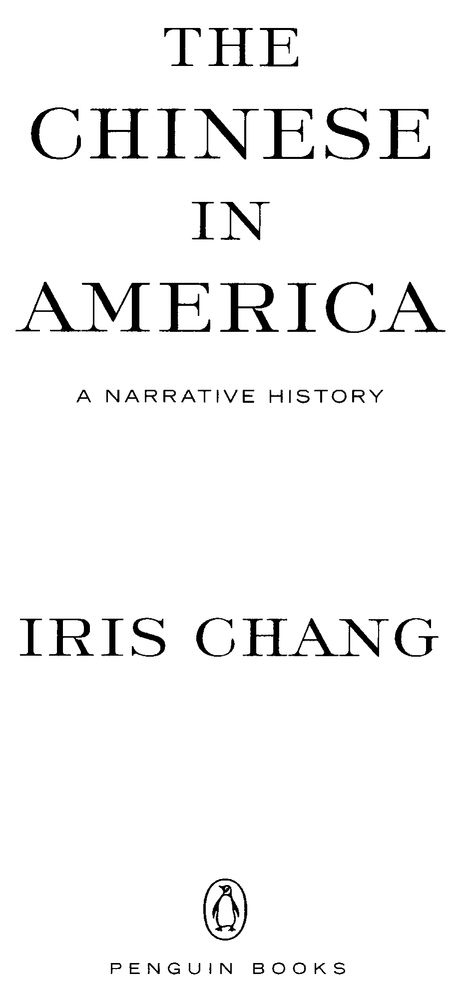
INTRODUCTION
The story of the Chinese in America is the story of a journey, from one of the worlds oldest civilizations to one of its newest. The United States was still a very young country when the Chinese began arriving in significant numbers, and the wide-ranging contributions of these immigrants to the building of their adopted country have made it what it is today. An epic story that spans one and a half centuries, the Chinese American experience still comprises only a fraction of the Chinese diaspora. One hundred fifty years is a mere breath by the standards of Chinese civilization, which measures history by millennia. And three million Chinese Americans are only a small portion of a Chinese overseas community that is at least 36 million strong.
This book essentially tells two stories. The first explains why at certain times in Chinas history certain Chinese made the very hard and frightening decision to leave the country of their ancestors and the company of their own people to make a new life for themselves in the United States. For the story of the emigration of the Chinese to America is, like many other immigration stories, a push-pull story. People do not casually leave an inherited way of life. Events must be extreme enough at home to compel them to go and alluring enough elsewhere for them to override an almost tribal instinct to stay among their own.
The second story examines what happened to these Chinese migrs once they got here. Did they struggle to find their place in the United States? Did they succeed? And if so, how much more difficult was their struggle because of the racism and xenophobia of other Americans? What were the dominant patterns of assimilation? It would be expected that the first-arriving generations of Chinese, like the first generations of other immigrant groups, would resist the assimilation of their children. But to what degree, and how successfully?
This book will also dispel the still pervasive myth that the Chinese all came to America in one wave, at one time. Ask most Americans and even quite a few Americans of Chinese descent when the Chinese came to the United States, and many will tell you of the mid-nineteenth-century Chinese laborers who came to California to chase their dreams on Gold Mountain and ended up laying track for the transcontinental railroad.
More than one hundred thousand Chinese laborers, most from a single province, indeed came to America to make their fortunes in the 1849-era California gold rush. But conditions in China were so bad politically, socially, and economically that these migrs to California represented just a small part of the single biggest migration out of that country in history. Many who left China at this time went to Southeast Asia or elsewhere. Those who chose America were relying on stories that there was enough gold in California to make them all rich quickly, rich enough to allow them to return home as successes, and the decision to leave their ancestral homeland was made bearable only by the promise they made themselves: that no matter what, they would one day return. But most stayed, enduring prejudice and discrimination, and working hard to earn a living, and their heritage is the many crowded Chinatowns dotting America from San Francisco to New York. Of their descendants, however, very few are still laborers or living in Chinatowns; many are not even recognizably Chinese because, like other immigrant groups, their ancestors intermarried. If we restrict the definition of Chinese American to only full-blooded Asians with an ancestral heritage linking them to China, we would exclude the many, many mixed-race descendants of Chinese immigrants.


